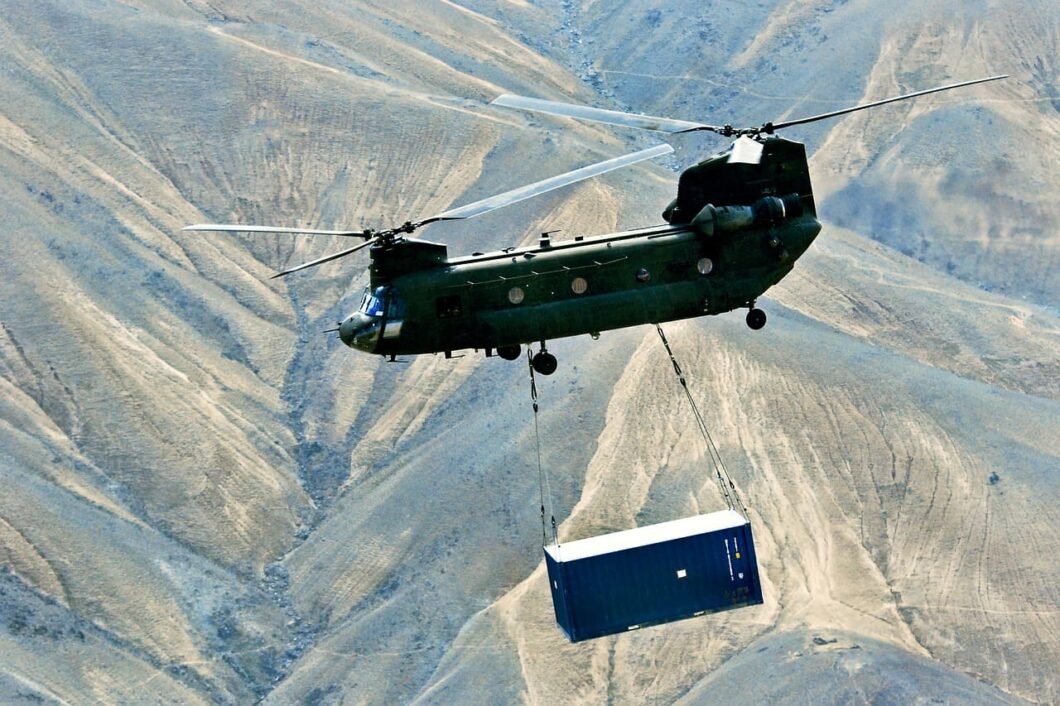So you’ve decided to take the plunge and build a container home. Assuming you’ve purchased the containers you plan to use for building your home, you’ll probably still need to transport them to your construction site.
To the surprise (and occasional dismay) of many DIY builders and first-time buyers, container delivery is one of the most critical considerations in planning the transition to a container home.
Even those living near a port will likely need the assistance of a delivery service to transport their containers to the construction site. Depending on your particular situation, the cost of container delivery can vary from quite expensive to relatively affordable.
While planning the transport of your containers, you may have questions such as:
How to move a container?
As a DIY container home builder, you might wonder how to move a 40-foot container in the most cost-effective way. Even if hiring a professional container home builder doesn’t fit your budget, hiring transport might end up being the most economical way to get your containers to the construction site.
Who can move a container?
Due to the fact that a standard 20-foot container weighs over 5000 pounds or 2258 kilograms and a standard 40-foot container weighs around 8,200 pounds, they are generally transported using a semi-trailer or a large platform trailer pulled by a heavy-duty truck.
If you have a professional/commercial driver’s license, the decision to transport your containers boils down to time and cost. Assuming you have a professional/commercial driver’s license but don’t have access to the necessary equipment to transport a container, it might make sense to consider renting a truck.
If you have the time and access to the necessary equipment to transport containers but lack a commercial driver’s license, you’ll need to consider local regulations in your decision. While most states allow builders to tow a trailer large enough to move a container without requiring a commercial driver’s license, you still need to comply with Department of Transportation (DOT) weight limits. But you should find out what the requirements are in your country.
These DOT limitations are set in terms of Gross Vehicle Weight Rating (GVWR). The GVWR is calculated as the maximum weight a truck can carry, including the weight of the truck itself.
For instance, a truck with a DOT GVWR rating of 12,000 pounds has been certified to tow a trailer with a weight equal to or less than 12,000 pounds minus the weight of the truck and its fuel, passengers, and cargo.
Most states only require a commercial driver’s license to operate a truck/trailer combination weighing over 26,000 pounds. A typical ¾-ton passenger truck capable of towing a trailer large enough to accommodate a container weighs between 6,000 and 7,000 pounds.
It’s important to note that the excess weight of the loaded truck includes both the weight of the empty trailer and the weight of the cargo being transported.
Adding the average weight of 8,200 pounds of a standard 40′ container leaves safely around 9,000 pounds of GVWR allocation for the trailer. Considering that the average 40-foot tandem axle trailer weighs around 8,920 pounds unloaded, an additional passenger or some cargo on your towing vehicle could push it over the non-commercial driver’s license GVWR limit.
Even if you’re below the weight limit that would require a CDL, container transportation might still not make financial sense. Considering the cost of fuel, wear and tear on your towing vehicle, time, and the fact that many container builders don’t own a 40′ trailer, it often makes more financial sense to hire a professional container delivery service.
What’s the cost of moving a container?
When planning the construction of your container home, you’re probably also wondering: How much does moving a container cost? The answer: it depends.
Regardless of whether you’re planning to hire a container delivery service or pick up and deliver the containers yourself, there are several crucial things to consider.
As you can probably imagine, purchasing your containers locally will likely save you money on the cost. That said, this isn’t always the case.
Outside of the distance between the home construction site and a container supplier, the cost of moving a container depends on:
- Container sizes
- Number of containers being delivered
- Number of transport companies in your area
- Cost of professional container delivery
As a general rule, a container delivery service will charge around $4.00 per mile to deliver a 20-foot container or a 40-foot container. Observing the average cost for container delivery incurred by our customers, it’s safe to say you should expect to pay less than $1000 to receive a container.
It’s important to note that the container cost doesn’t always include the price for unloading or placing containers on your land. While one might assume this would be included in the delivery, some professional delivery services consider this a separate service. With this in mind, when deciding on a container delivery service, it’s important to establish if unloading is included in the quoted price or not.
Additional cost of placing containers
If you’re working with a company that doesn’t offer container placement, you’ll need to hire another company to do it or find a way to move the containers yourself.
The cost of ‘placing’ or moving containers from the delivery site to the exact location where you want to build can be quite challenging. Depending on your land’s design and some other circumstances, placement can add a considerable cost to your final delivery cost.
As mentioned earlier, the cost of hiring professional container placement depends on the ease of access to your construction site and the details of your container home design.
Assuming there’s easy access for a delivery truck on your land, a transporter with a tilt-bed trailer can slide your container directly onto the foundation of your container home or the desired construction location at no extra charge.
Assuming you’re planning to build a multi-story container home, you should budget for the additional cost of stacking your containers. Similarly, if your land has thick vegetation or challenging terrain, you’re likely to end up paying more to place your containers.
If this is the case for your construction, it’s best to look for a delivery service that has a knuckle boom truck. Knuckle boom trucks have small built-in cranes that can lift and place a container in an area that a tilt-bed truck couldn’t access. While knuckle boom truck cranes often have a very limited reach, they often end up being a much cheaper alternative than renting a crane or hiring a crane service.
Even if a knuckle boom won’t be able to place your containers at their final resting place, there are still several cheaper crane alternatives available to consider.
Tools for moving containers
If you’re building a single-story container home, there are a number of relatively affordable tools available that allow a builder to move a container on their own. Tools ranging from container roller platforms to temporary container wheels and tow bars are available to assist in placing your containers. Polyurethane wheels are a great resource to learn and purchase moving solutions at a competitive price.
Stacking containers with a forklift
If you need to stack containers for building a multi-story container home, renting a forklift can help you avoid paying for a crane.
It’s important to note that using a forklift to stack containers is a risky venture for an inexperienced operator. Beyond the importance of experience, it’s also crucial to consider that not all forklifts are designed to handle a payload as large as a container before choosing this route.
That said, if you’re familiar with operating heavy equipment and have access to a model that can safely move containers, using a forklift on-site is an excellent way to save money on your construction.
When choosing a forklift to use, it’s generally best to choose the most capable model within your budget. Standard 20′ containers have built-in pockets for forklifts with a spacing of 69 inches. If you only need to move or stack 20-foot containers, any all-terrain forklift with a payload capacity of 6,000 pounds and forks that can extend to 69” or more should suffice.
However, if you plan to move or stack 40-foot containers, you’ll need to adjust your equipment accordingly. In addition to 40-foot containers lacking built-in forklift pockets, their considerable weight and size limit the available forklift models capable of moving them.
At a minimum, a forklift used to move a 40-foot container should have a payload capacity greater than 10,000 pounds and forks at least 8 feet long. Because you’ll be picking up a 40-foot container from underneath, any fork shorter than 8 feet risks puncturing the floor of your container.
Even with the right equipment and a trained operator, there are still some important things to consider when moving a container with a forklift.
Before starting work moving or stacking your containers, carefully consider:
- Obstacles present that could complicate the moving process
- If your construction site is level enough for safe forklift operation
- Condition and structural integrity of the floors and ceilings of the containers you want to stack
When stacking containers, it’s also important to ensure corner posts are aligned. Corner posts are designed with stacking in mind, with a slight recess at the bottom of the container and a slight protrusion at the top. When properly aligned and seated, a container’s corner posts will evenly distribute the load of the upper container onto the stronger parts of the lower container.
Due to the placement of corner posts on the outer corners of a container, it’s generally much easier to stack a 40-foot container onto another forty-footer or two 20-footers. If you want to stack a 20-foot container on top of a single 40-footer, you’ll need to fabricate additional supports to evenly distribute the load and avoid the risk of the 40-foot container’s roof collapsing.
How to Move a Container with a Crane
If cost isn’t a concern, the easiest way to move and stack containers is by using a crane. Of course, there are certain situations where getting a crane on-site is more complicated than it’s worth. That said, if your land can safely accommodate a crane and your budget allows for the expense of using one, it can save time and avoid many of the headaches associated with other methods listed above.
At Stackhouse, we handle construction logistics for our clients, removing any cause for concern.
International Container Transport Costs
If you plan to build your home in a country that doesn’t have a good local supply of containers, or if you want to buy a new container to use in your construction, it’s likely your containers will spend some time on a boat.
Surprisingly, the base cost of an empty container from Shenzhen, China – Los Angeles, California can be as low as $600. However, factoring in China export clearance, document delivery, U.S. customs clearance, and other local charges into the equation can push this cost into ranges between $2,000-$3,000 USD.
With this in mind, it’s often much more cost-effective to buy from a supplier in your country of residence than to try and import a container yourself.
Where to find container delivery services?
We’re happy to connect builders with the best available suppliers and delivery services in their area, HERE.
When should I pay for container delivery?
Depending on the container supplier you end up using, the answer to this question varies. If your container delivery route involves time on a boat, or if you’re using a large international transport company for shipping, you’re expected to pay for delivery before your containers are shipped.
If you’re working with a local container dealer or using a small land freight service to transport your containers from a large national dealer, you typically should expect to pay an initial deposit, with the remaining balance due upon delivery.
Do I need container insurance for delivery?
Container insurance can offer great peace of mind during the delivery process. That said, it’s important to weigh the cost of insurance against the value of the containers you’re paying to transport and the likelihood of damage during transit.
Generally, whenever you use a boat to transport your containers, it usually makes sense to insure them for their journey.
While many international shipping companies include insurance in their quoted rate, it’s important to verify that you’re covered. Considering the higher cost of acquiring containers internationally and shipping them by boat, the cost of insurance often pales in comparison to the potential cost of an uninsured loss.
How long does delivery usually take?
The delivery time for land container delivery depends on the distance between the construction site and the dealer and the supplier’s accumulation/policies.
As a general rule, most container dealers can receive a container within a week of purchase. Some container sellers offer expedited delivery for an additional cost.
If you’re buying your containers internationally or bringing them to your construction site requires the use of a boat, the time between ordering and receiving your containers will likely be a few months at minimum. While some shipping companies offer express services similar to those mentioned above, the trip from China to anywhere takes the average cargo ship 15 to 30 days.
Adding the time spent at port and needed for land delivery, you should still expect no less than a month and a half before receiving your order.
Does professional container delivery cost more than container remodeling?
As you can probably guess from reading the above information, the answer to this question is different for each build. As each construction is different, the only reliable way to compare costs between professional delivery service options and a rental company is by contacting container dealers and equipment rental companies in your area.
Whether you need help getting containers for building your home or if you’re trying to weigh the pros and cons of hiring a professional container home builder, feel free to reach out to a container home expert in your area today.




